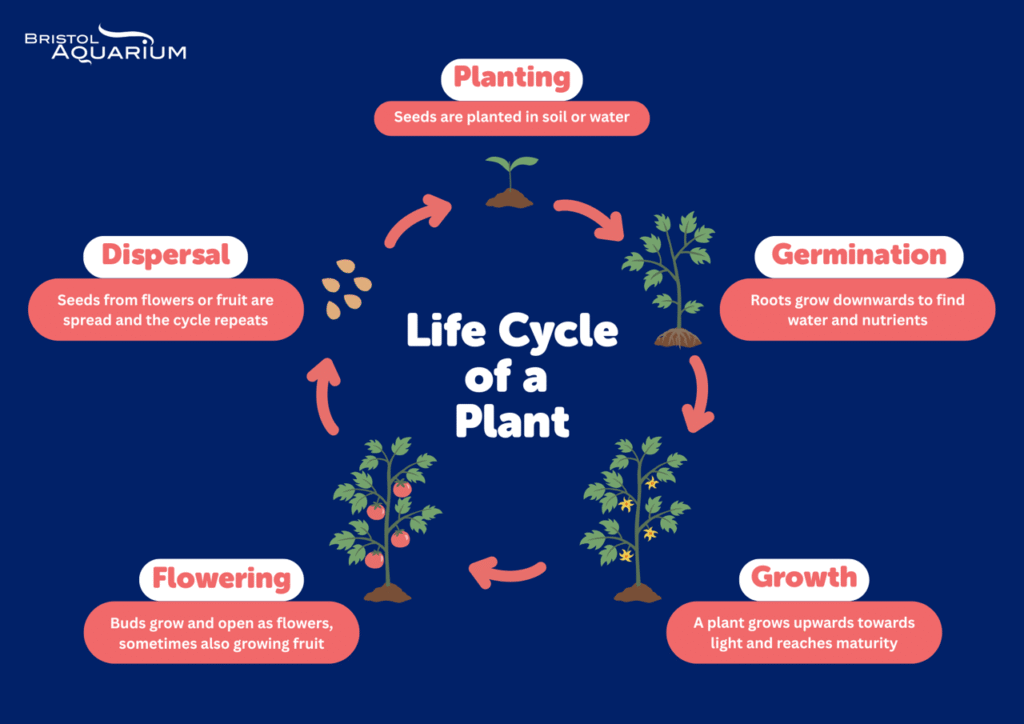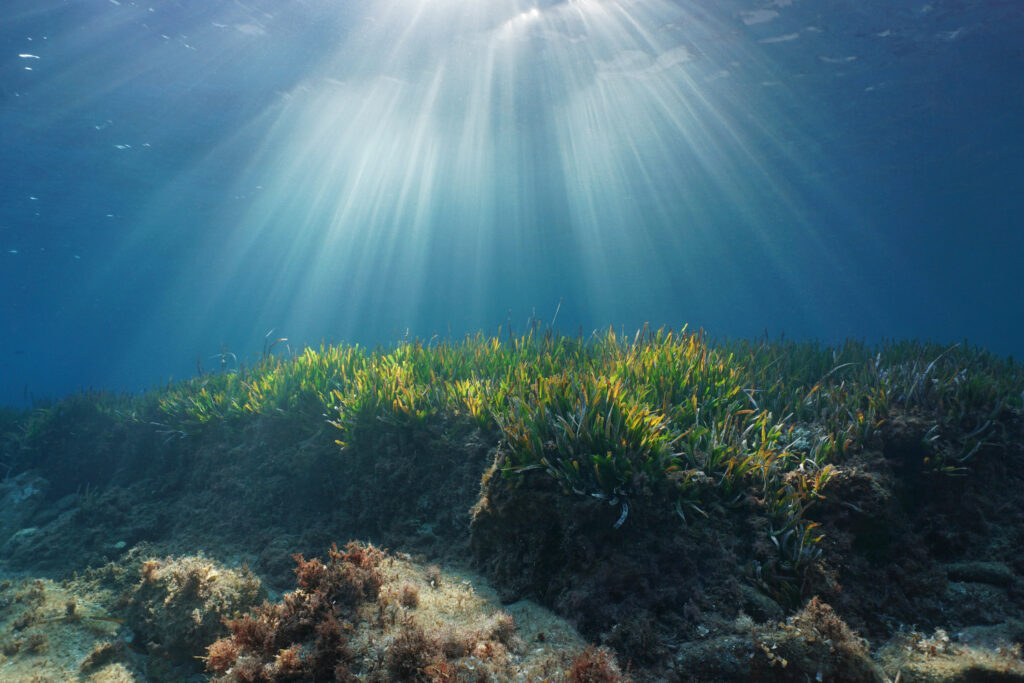Every living creature on Earth follows its own life cycle, including plants. Here, you can learn all about the stages in the life cycle of a plant and use our diagram to understand its growth journey from start to finish.
Life cycle of a plant diagram
Wondering how a plant grows? Our free downloadable Life Cycle of a Plant poster shows the life cycle of a plant, including labelled stages and what happens during each one.

Now you know the basics, it’s time to take a closer look at each stage.
What is the lifecycle of a plant?
Plants go through five key stages in their life cycle. But how does each stage start? What weather conditions can affect the stages? And how long does each stage usually last? To find the answers to all the most important questions about a plant’s life cycle, read on!
Planted seed
Plants usually grow from seeds, which have been planted either by humans or via natural methods, which we’ll get onto later. This starts the cycle and is often the shortest stage of the cycle.
In nature, plants usually grow from seeds in the ground or in water. We humans have learnt to replicate this by sowing seeds. A single seed consists of a seed coat, an embryo and enough stored food for germination to begin. A seed requires water, oxygen, and the right warm temperature to emerge from the seed coat.
However, some seeds can stay dormant in soil or water for a long time if the conditions aren’t quite right for germination to begin.

Germination
When a seed soaks up water, it swells, causing the seed coat to break. As water enters the seed, it activates the stored food, which provides energy for growth. The root is the first part to grow, anchoring the seedling and allowing it to absorb nutrients from the soil.
During this stage, the roots will grow downwards in search of water and nutrients to help the plant grow. For most plants, this process can take up to 2 weeks, but some (like tomato or rosemary plants) might need a further week or two.
Growth
The stem is next, which continues to grow upwards towards the sun, and then the first leaves emerge. The leaves photosynthesise using sunlight to make food and grow bigger. Eventually, the plant will mature into an adult, develop flowers and produce its own fruit and seeds.
Flowering and pollination
A plant reaches full maturity when its buds grow and open. Depending on the plant, these buds will either reveal flowers or grow fruits like berries.
Flowering can happen in one season for some plants, while others take several years to flower.
Flowers and pollinators are necessary for reproduction, creating seeds for the next generation. Pollinators such as bees and other insects are attracted by the colourful petals and the promise of pollen. In exchange for pollen, they fertilise the flower, leading to the formation of more seeds.
Seed dispersal
Flowers or fruit will produce seeds that are unique to the plant, and these can spread in a few different ways.
Some plants have their own unique spring firing mechanisms to start a new life cycle.
Dispersal might be slower if the seeds are eaten by animals, since some animals can carry the seeds in their digestive systems for days or even weeks before they’re returned to the soil through animal poop.
You can even help with this stage from your own garden if you spot any seeds lying around. All you need to do is find a space with plenty of natural light, dig a hole for the seed and pack soil on top!
The cycle can then repeat from the start, with the seeds being planted.
Aquatic plants also share the same life cycle as plants you would find on land.

Get up-close with exotic plants at Bristol Aquarium
Bristol Aquarium isn’t just home to some of the most exciting marine creatures from around to world – we also have a varied collection of exotic plants you can come up close and personal with.
Let’s get to know a few of these unique plants…
- Ginkgo biloba: At 200 million years old, the ginkgo biloba is known as the living fossil. You can find this tree plant species standing proud in our Rocky Shores zone.
- Dicksonia antarctica: This giant fern plant can live up to an impressive 1000 years. See if you can spot this one alongside our ginkgo biloba in the Rocky Shores zone!
- Monstera deliciosa: A climbing plant capable of reaching massive heights and producing delicious fruit, the monstera deliciosa is an attraction all on its own. Our monstera deliciosa can be found in the Urban Jungle area within our Amazing Amazon zone in England’s only aquarium-based Botanical House.
- Tradescantia pallida: Also found in our Amazing Amazon zone and known as the purple heart or purple queen, this plant is commonly used for food colourants and preservatives, thanks to its everlasting purple colouration. It can also be used as an indoor plant to help improve indoor air quality.
Enjoyed this guide to the life cycle of a plant? Check out our other blogs for more fun facts and insights on the planet’s living creatures!
